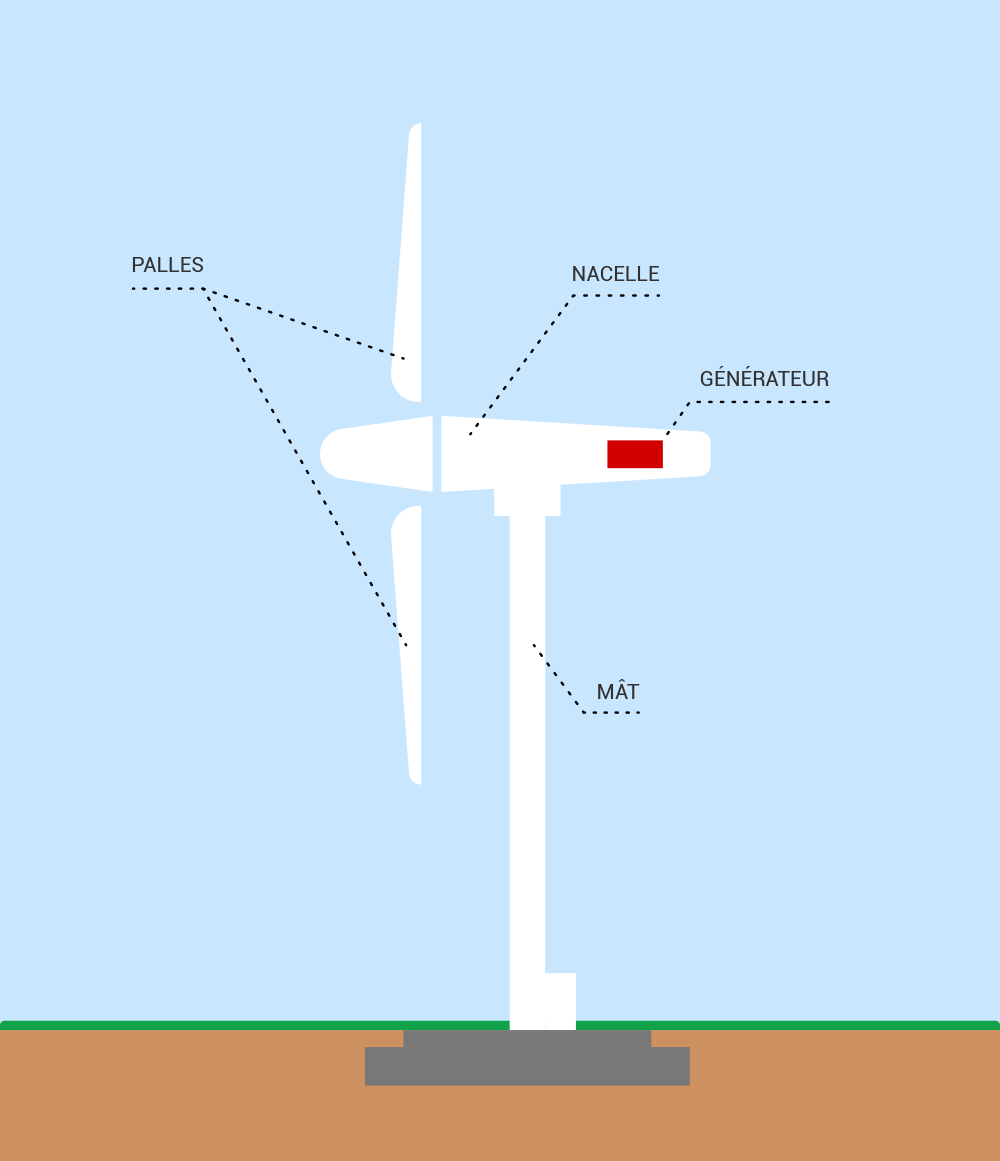History of wind power
ailors in the Aegean Sea from the 11th millennium BC were the first to use wind power to inflate the sails on their boats.
Then, and up to the 19th century, wind power was used to perform mechanical work, to make windmills turn, for example by millers to make flour from grain.
The first electricity production wind turbine was commissioned in 1900 in Dunkirk.
The principle:
Wind turbines, or aerogenerators, work using the power of the wind. Indirectly, it is solar rays that drive the movement of air masses by creating different pressure and temperature zones.
To produce electricity, the wind turbines convert kinetic energy from the wind into mechanical energy by making the blades turn which, when coupled with a generator, produce electricity.
The main components of a wind turbine are:
- The blades
- The nacelle
- The generator
- The mast
The various wind turbine types:
There are two types of wind turbine, those in the sea, known as off-shore wind turbines, and those on land, known as on-shore wind turbines. Among the latter, a distinction is made between domestic wind turbines, which are smaller and intended to supply a house, and industrial wind turbines, or “wind farms”, directly connected to the electricity grid.
In figures :
In 2019, wind power production was 30.7 TWh, or 6.3% of France’s total production.
The total available output from the French park is 17.3 GW.


